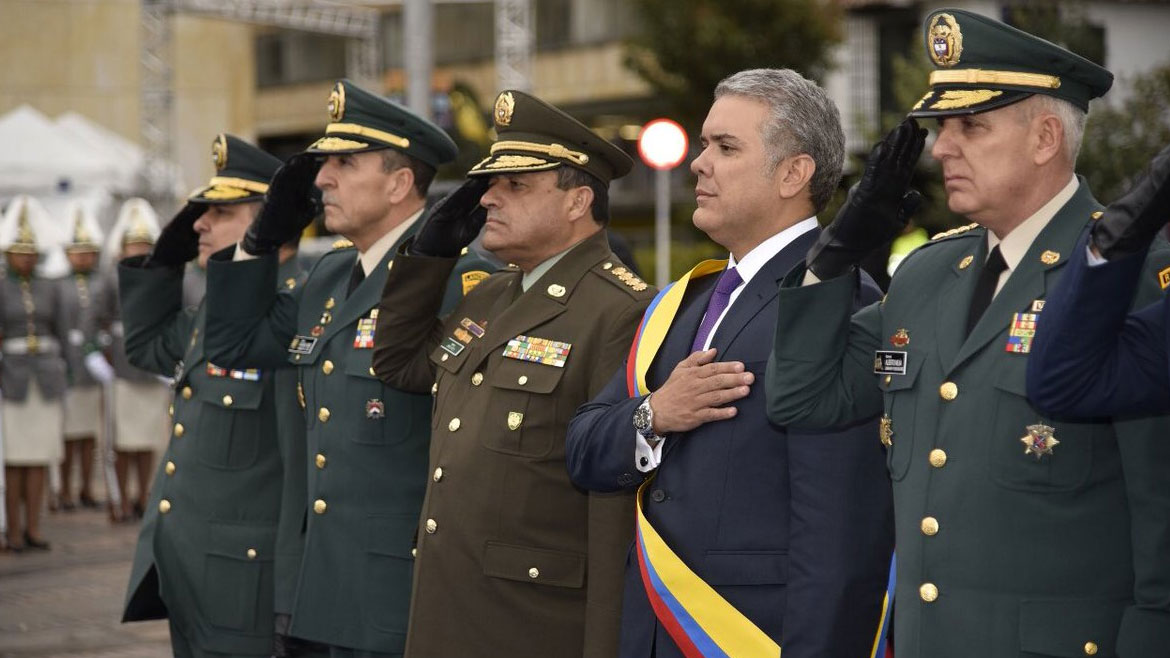Violence in Colombia escalated significantly during the regime of outgoing President Ivan Duque, according to an independent conflict monitor.
In a report, conflict monitoring NGO Indepaz confirmed findings by a recent report by the United Nations, which registered a surge in violence against civilians between 2020 and 2021.
According to Indepaz, the vast majority of this violence was carried out by illegal armed groups.
The NGO additionally registered 421 assassinations carried out by police officers of which 44 were carried out during anti-government protests between April and July last year.
Colombia’s illegal armed groups violently expanded in 2021: UN
Homicides
Based on police statistics, Indepaz claimed that 50,179 civilians were murdered between August 7, 2018, the day that Duque took office, and Monday.
Last year’s homicide rate of 26.7 per 100,000 inhabitants was the highest since 2014, according to the statistics.
Homicides since 2012
The homicide rates in 170 so-called PDET municipalities that are a priority in a peace process that followed a 2016 agreement between former President Juan Manuel Santos and the now-defunct guerrilla group FARC were considerably higher than the national rate.
The homicide rates of so-called PNIS municipalities where locals took part in a program to substitute coca, the base ingredient of cocaine, for other crops was more than double that the national rate.
Homicides in PDET and PNIS municipalities
Human rights defenders and community leaders
According to Indepaz, 957 human rights defenders and community leaders were assassinated while Duque was in office.
This type of political violence has been common in Colombia’s armed conflict and is a major priority in the peace process.
Assassinations of social leaders
The group that was mainly affected by the assassination of civil society leaders were indigenous leaders. According to Indepaz, 304 of them were assassinated while Duque was in office.
Colombia’s indigenous urge action after wave of death threats
Reintegrating former FARC members
Another 261 reintegrating former FARC members were assassinated in the past four years, according to Indepaz.
The NGO additionally registered 313 massacres that left a total of 1,192 victims.
The deadly violence mainly affected regions that were abandoned by the FARC in 2017 and where the State has historically been absent.
Assassinations and massacres
Paramilitary organization AGC was suspected of carrying out 17.9% of the registered assassinations and massacres, according to Indepaz.
FARC units that refused to demobilized and groups formed by rearmed former FARC members allegedly committed 11.1% of the killings followed by guerrilla group ELN that was suspected in 10.7% of the cases.
The alleged perpetrators of 43.4% of the homicides have yet to be established, the NGO said in its report.
Suspected assassins
Economic and political forces would be behind much of the violence carried out by the illegal armed groups, said Indepaz.
Duque would be politically responsible for much of the violence for his government’s failure to implement the 2016 peace deal, which contained elements to prevent and respond to the violence.
Additionally, the failure to implement “issues of integral rural reform, drug policy and the illicit cultivation of coca, has facilitated the reconfiguration of armed groups, mafias with ties to money laundering enterprises and State agents.”
Guerrilla groups like the ELN and those formed by FARC dissidents benefited the most from the outgoing government’s failed security and peace policies.


